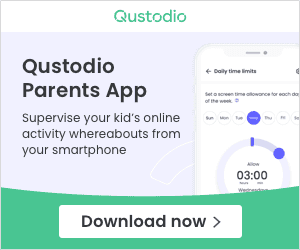2023 isn’t just a new year, but it also a year that brought new technologies in mobile app development. React Native and Flutter, being around for a while now, are considered the top 2 best mobile app frameworks for developing robust applications for cross-platform. But, which one is better: react native vs flutter? Let’s dig around
What is a Mobile Framework?
In mobile app development, like a house frame, frameworks act as a foundation for systematically building your code.
Many developers depend on these mobile frameworks to boost the efficiency and performance of application development. These frameworks help eliminate the tedious work of creating from scratch the mobile application.
Without wasting time, let’s have a side-by-side comparison of Flutter vs React Native.
What is Flutter?
Flutter uses Dart Language programming, and it’s a reactive cross-platform mobile development framework.
Flutter and Dart were created in 2017 by Google who’s using the framework for a few of its biggest applications.
Naturally, they’re constantly pushing the framework to be an ultimate resort for the creation of cross-platform mobile applications.
What is React Native?
React Native is probably the renowned world champion of cross-platform mobile development. A JavaScript framework, React Native is built upon the React library, both created by Facebook, and with just a single codebase, it allows you to ship IOS and Android apps.
It’s used primarily by Airbnb, Instagram, Facebook, and many more. React Native kicked off back in 2013 as an internal hackathon project at Facebook, and in 2015 the public gain access to it.
Flutter vs. React Native: Comparison
React Native architecture requires JavaScript Bridge as a runtime environment for the app to function. This bridge is a medium of communication between JS code and native modules.
In simple words, React Native needs the JS code to be compiled into native code. The use of JSON is required to enable this communication between them.
Flutter app architecture is pretty simple. There’s no need for any mediator (like JS bridge) because Dart and Skia have already compiled the native code.
In short, the Flutter engine comes with just everything required to create cross-platform mobile apps in no time.
Flutter vs. React Native: Performance
To communicate with Native components, React Native needs JavaScript Bridge. So obviously, React Native loading speed will be reduced.
Flutter code is compiled ahead of the application run time. Therefore, the performance is far, much faster in Flutter apps. Because it uses Dart, Flutter offers for automation testing comprehensive support.
Flutter developers and testers have access to heaps of testing features for unit, integrated, and widget testing of the app.
This means your Flutter app can yield an animation runtime speed of as high as 60 frames per second.
Undoubtedly, it clearly shows that Flutter is the winner when it involves building high-performing hybrid mobile apps!
However, React Native has absolutely zero official testing support for UI level and integrated testing. There are only tools to test units, and that’s an awfully limited set too.
That means, React Native developers need to depend on third-party tools like Appium and Detox for UI-level testing.
Flutter vs. React Native: Developer Productivity
If the React Native developer is skilled in JavaScript, he can easily use those skills for cross-platform application development. React Native contains a hot reload feature that saves developers time while testing the changes within the UI.
In terms of IDE support, developers are liberated to use any text editor or IDE of their choice. Flutter also contains a hot reload feature, and it’s very easy to try the demo app.
When to settle on React Native and when to use Flutter?
Choose React Native, if:
Scale existing applications with cross-platform modules.
You are required to develop lightweight native applications.
You are trying to find possibilities for sharing APIs out of the box.
Choose Flutter, if:
Your idea doesn’t require complete native functionality.
The budget and delivery timeline are tight.
You want to write down codes faster and deploy them into the market quickly.
You want to create apps that perform at speed between 60 FPS/120 FPS.
So there you go! We hope that this comparison will be of great help to you.







